Home>Home Maintenance>4-Point Inspection: How Long To Fix For Buyer And Seller


Home Maintenance
4-Point Inspection: How Long To Fix For Buyer And Seller
Modified: March 6, 2024
Learn how long it takes to fix issues found during a 4-point inspection for home maintenance, whether you're a buyer or seller.
(Many of the links in this article redirect to a specific reviewed product. Your purchase of these products through affiliate links helps to generate commission for Storables.com, at no extra cost. Learn more)
Introduction
A 4-Point Inspection is a crucial step in the home buying process, providing valuable insights into the condition of essential components of a property. It is typically requested by insurance companies to assess the risk associated with insuring older homes or properties that have specific issues. This inspection focuses on four main areas of a property: the roof, electrical system, plumbing system, and HVAC (heating, ventilation, and air conditioning) system.
The purpose of a 4-Point Inspection is to identify any deficiencies, potential hazards, or areas of concern within these key components. It helps both buyers and insurance providers establish the condition of the property and determine the level of risk involved. For buyers, it provides peace of mind and ensures they are aware of any potential repair costs or safety concerns before making a significant investment. For insurance companies, it allows them to assess the property’s insurability and set appropriate coverage and premium rates.
Understanding the process and the timeline for addressing any issues found during a 4-Point Inspection is essential for both buyers and sellers. In this article, we will explore the buyer’s perspective, providing insights into interpreting the 4-Point Inspection report and managing the waiting period. We will also provide suggestions for sellers on promptly addressing identified issues and effectively collaborating with contractors and service providers.
Key Takeaways:
- Buyers should carefully review the 4-Point Inspection report to understand potential repair costs, safety concerns, and the seller’s timeline for addressing issues before making a home purchase decision.
- Sellers should promptly address identified issues, communicate openly with buyers, and collaborate with qualified professionals to ensure a smooth and successful resolution of the 4-Point Inspection process.
Definition of a 4-Point Inspection
A 4-Point Inspection is a specialized evaluation of the four primary components of a home: the roof, electrical system, plumbing system, and HVAC system. Unlike a traditional home inspection that assesses the overall condition of a property, a 4-Point Inspection focuses solely on these key areas. It provides an in-depth review of the current state, age, functionality, and potential risks associated with these components.
During a 4-Point Inspection, a certified inspector will thoroughly examine each component, looking for any signs of damage, wear and tear, code violations, or safety hazards. They will inspect the roof for any signs of leaks, missing or damaged shingles, or structural issues. The electrical system will be assessed for outdated or faulty wiring, improper grounding, and potential fire hazards. The plumbing system will be checked for leaks, corrosion, water pressure issues, and outdated materials. Lastly, the HVAC system will be evaluated for proper operation, maintenance, and potential malfunctioning.
It is important to note that a 4-Point Inspection is typically required for homes that are older or have specific issues, especially when requested by insurance companies. This inspection helps insurance providers assess the risk associated with insuring a particular property, as older homes or those with outdated systems may be more prone to potential claims or safety hazards. By conducting a thorough evaluation of these four key areas, insurers can determine the level of risk involved, set appropriate coverage, and establish premiums accordingly.
It is worth mentioning that while a 4-Point Inspection is essential for insurance purposes, it does not replace a comprehensive home inspection. Buyers are encouraged to engage a professional home inspector to thoroughly examine all aspects of the property beyond the four main components. Additional inspections may be necessary to evaluate the foundation, structural integrity, pests, environmental factors, and other potential concerns.
Importance of a 4-Point Inspection
A 4-Point Inspection holds significant importance for both buyers and sellers in the real estate market. For buyers, it provides valuable insights into the condition of essential components of a property, helping them make informed decisions and safeguard their investment. Let’s delve into the explanations for buyers on the significance of a 4-Point Inspection:
1. Understanding the 4-Point Inspection Report: The inspection report provides comprehensive details about the condition of the roof, electrical system, plumbing system, and HVAC system. It outlines any issues, deficiencies, or potential hazards that may exist within these components. By understanding the report, buyers can assess the potential costs, risks, and safety concerns associated with the property.
2. Typical Issues Found in a 4-Point Inspection: A 4-Point Inspection often uncovers common issues that may not be apparent during a regular walkthrough of the property. These issues can include roof leaks, damaged electrical wiring, plumbing leaks, outdated HVAC systems, improper installations, and code violations. Knowing about these issues in advance allows buyers to plan for repairs, negotiate with sellers, or assess the overall feasibility of the purchase.
3. Timeframe for Sellers to Address the Issues: The inspection report may indicate repair or replacement recommendations for certain components. It is essential for buyers to understand the timeframe required for the seller to address these issues. Depending on the severity of the problems, repairs may range from minor fixes that can be completed quickly to more significant replacements that can take longer. Buyers should consider this timeframe when planning their move-in schedule or negotiating with the seller on repairs.
4. Considerations for Buyers During the Waiting Period: After the 4-Point Inspection, there is usually a waiting period for the seller to address the identified issues. During this time, it is crucial for buyers to consider their options. They can use this period to conduct further research, gather estimates for repair costs, or consult with professionals regarding the potential risks and implications of the reported issues. This waiting period allows buyers to make informed decisions about moving forward with the purchase or negotiating with the seller for repairs or credits.
In summary, a 4-Point Inspection is vital for buyers as it provides a detailed assessment of the four key components of a property. Understanding the inspection report, typical issues, and the timeframe for sellers to address identified problems helps buyers make informed decisions and navigate the home buying process with confidence.
Understanding the 4-Point Inspection Report
Once a 4-Point Inspection is conducted on a property, a comprehensive report is generated, detailing the condition of the roof, electrical system, plumbing system, and HVAC system. Understanding this report is crucial for buyers as it provides valuable insights into the property’s condition and helps assess potential risks or issues. Here are some key points to help buyers interpret the 4-Point Inspection report:
1. Component Descriptions: The report will provide a breakdown of each component that was inspected, including details about its current condition, age, and functionality. It may include information about the roofing material, electrical wiring, plumbing materials, and HVAC system specifications. Understanding these descriptions will help buyers evaluate the overall health and longevity of each component.
2. Deficiencies and Hazards: The report will highlight any deficiencies or hazards that were identified during the inspection. This could include roof leaks, outdated electrical wiring, plumbing leaks, improper installations, or malfunctioning HVAC systems. It is crucial for buyers to pay close attention to these issues as they may pose safety risks or require costly repairs or replacements.
3. Recommendations for Repairs or Replacements: Based on the findings, the report will often provide recommendations for necessary repairs or replacements. It may suggest specific actions to address the identified deficiencies or hazards. Buyers should review these recommendations carefully to determine the potential costs and impact on the property’s functionality and safety.
4. Severity and Impact on Insurability: The report may indicate the severity of the issues and their potential impact on the property’s insurability. Insurance companies may have specific requirements or standards for insuring properties, and certain issues may affect the ability to obtain coverage or influence the premium rates. Buyers should consider these factors when evaluating the feasibility of purchasing the property.
5. Further Evaluation or Specialist Consultation: In some cases, the 4-Point Inspection report may recommend further evaluation or consultation with specialists for specific issues. This could involve hiring a certified roofer, electrician, plumber, or HVAC technician to assess the components in more detail. Buyers should heed these recommendations and seek expert opinions to fully understand the scope and potential remedies for the identified problems.
Understanding the 4-Point Inspection report is essential for buyers as it provides valuable information about the condition, deficiencies, and potential risks associated with the property’s key components. This knowledge empowers buyers to make informed decisions, negotiate repairs or credits with the seller, and plan for any necessary renovations or maintenance.
Typical Issues Found in a 4-Point Inspection
A 4-Point Inspection focuses on four main areas of a property – the roof, electrical system, plumbing system, and HVAC system. During this inspection, certified inspectors often uncover common issues that can affect the functionality, safety, and potential insurability of the property. Understanding these typical issues can help buyers assess the scope of necessary repairs or replacements and negotiate with sellers. Here are some common problems that may arise during a 4-Point Inspection:
1. Roof Issues: Inspectors may find various roof-related problems, such as missing or damaged shingles, signs of leaks or water damage, deteriorated flashing, or sagging areas. These issues can lead to water infiltration, structural damage, and potential safety hazards if not addressed promptly.
2. Electrical Problems: Outdated or faulty electrical systems can pose significant risks, including fire hazards. Issues that may be identified include improper wiring, overloaded circuits, outdated panels or breakers, insufficient grounding, or unsafe installations. These problems often require the expertise of a licensed electrician to address.
3. Plumbing Leaks and Deficiencies: Common plumbing issues found during a 4-Point Inspection include leaks, corroded pipes, low water pressure, improper installations, or outdated plumbing materials. These deficiencies not only waste water and increase utility costs but can also lead to water damage, mold growth, or even structural issues if left unattended.
4. HVAC System Malfunctions: The inspection may reveal problems with the heating, ventilation, and air conditioning systems. This could include malfunctioning components, inadequate maintenance, dirty filters, refrigerant leaks, or outdated equipment. An inefficient or malfunctioning HVAC system can result in discomfort, higher energy bills, and poor indoor air quality.
5. Code Violations: Inspectors will also assess the property for any code violations that may exist within these four areas. This could include non-compliant installations, outdated materials or equipment, or improper repairs and modifications made without proper permits. Code violations may need to be rectified to meet safety standards and satisfy insurance company requirements.
6. Age and Wear and Tear: The age and general wear and tear of the components will also be evaluated during the inspection. Older roofs, electrical systems, plumbing systems, and HVAC systems may be more prone to issues or may not meet current efficiency or safety standards. Buyers should consider the potential costs of replacing or upgrading these aging components when evaluating the property’s overall condition.
Identifying these typical issues during a 4-Point Inspection allows buyers to understand the potential risks, estimate repair or replacement costs, and negotiate with sellers regarding necessary repairs or credits. It is essential to work with a qualified inspector and consider seeking expert opinions from contractors or technicians to assess the severity and appropriate remedies for these issues.
Timeframe for Sellers to Address the Issues
After a 4-Point Inspection has been conducted on a property, the seller typically has a specific timeframe to address the identified issues. The timeframe may vary depending on the severity and complexity of the problems found. It is important for buyers to understand the expected timeline for repairs or replacements so they can plan accordingly. Here are some factors that can impact the timeframe for sellers to address the issues:
1. Nature of the Issues: The nature of the issues found during the inspection can significantly impact the timeframe for repairs. Minor issues, such as a loose shingle or a small plumbing leak, can often be addressed relatively quickly. However, more extensive issues, such as a major roof repair or rewiring an outdated electrical system, may require more time, coordination, and resources to complete.
2. Availability of Contractors and Service Providers: The availability of contractors and service providers can also affect the timeframe for repairs. Some contractors may have a busy schedule, especially during peak seasons, which could delay their ability to start or complete the necessary work. Sellers should promptly communicate with contractors, obtain estimates, and secure their services to ensure a smooth and timely resolution of the identified issues.
3. Weather and Seasonal Limitations: Certain repairs, such as roof replacements or exterior work, can be weather-dependent. Adverse weather conditions, such as heavy rain, snow, or extreme heat, can delay repairs or prevent work from being done altogether. Sellers should consider the weather and seasonal limitations when estimating the timeframe for addressing the issues and communicating with buyers about the progress.
4. Complexity of Repairs: Complex issues may require additional time to diagnose, plan, and execute the necessary repairs. For example, replacing an outdated electrical panel or rewiring an entire property can involve significant work and coordination with professionals. Sellers should account for the complexity of repairs when estimating the timeframe and keep buyers informed about the progress along the way.
5. Negotiations and Agreement: The timeframe for repairs also depends on the negotiations between the buyer and seller. Sellers may need to consider the buyer’s preferences, their own financial constraints, and the specifics outlined in the purchase agreement. Both parties should communicate openly and work towards a mutually agreed-upon timeline for addressing the identified issues.
It is important for buyers and sellers to maintain clear and frequent communication throughout the process. Buyers should be patient and understanding, allowing sellers a reasonable timeframe to address the issues. Sellers, on the other hand, should prioritize timely repairs and provide updates to the buyer regarding the progress being made. By working together and respecting each other’s needs, the 4-Point Inspection process can proceed smoothly, resulting in a successful transaction for all parties involved.
Considerations for Buyers During the Waiting Period
After a 4-Point Inspection has been completed, there is typically a waiting period for the seller to address the identified issues. This waiting period presents an opportunity for buyers to make important considerations and take necessary steps. Here are some key considerations for buyers during the waiting period:
1. Research and Further Evaluation: Use the waiting period to conduct additional research or seek further evaluations. If the inspection report reveals significant issues or if you have specific concerns, consider consulting with specialists or contractors for their expert opinions. This can provide valuable insights into the scope of the problems and potential remedies, helping you make informed decisions about the property.
2. Gather Estimates for Repair Costs: If the inspection report highlights repair or replacement recommendations, obtain estimates from qualified contractors or service providers. This will give you an idea of the potential costs involved in addressing the issues. It is essential to gather multiple estimates to ensure you have a comprehensive understanding of the financial implications.
3. Assess the Impact on Financing: Depending on the severity of the identified issues, it may be necessary to revisit your financing options. Some lenders may have specific requirements or standards regarding property condition. Discuss the inspection findings with your lender to determine if any adjustments need to be made or if it may affect your loan approval. Consider consulting with a mortgage professional for guidance regarding the impact on financing.
4. Review Contingencies and Negotiate: Evaluate the contingencies outlined in the purchase agreement and discuss with your real estate agent or attorney. Depending on the inspection findings, you may need to negotiate with the seller regarding necessary repairs, credits, or adjustments to the purchase price. Your real estate professional can guide you through these negotiations to ensure your interests are protected.
5. Keep in Touch with the Seller: Maintain open lines of communication with the seller during the waiting period. Stay informed about the progress they are making in addressing the identified issues. Regular updates from the seller can help alleviate any concerns and provide peace of mind regarding their commitment to resolving the problems. Ensure that the agreed-upon timeframe for repairs is being met and request updates as necessary.
Suggestions for Sellers
As a seller, there are several suggestions to ensure a smooth and timely resolution of the issues identified during the 4-Point Inspection. Here are some tips to help sellers during this process:
1. Promptness in Addressing the Issues Found: Take the inspection report seriously and address the identified issues promptly. Timely action demonstrates your commitment to resolving the problems and can help maintain a positive rapport with the buyer. Establish a realistic timeline for repairs and communicate this to the buyer to manage their expectations.
2. Factors Affecting the Timeframe for Repairs: Understand the factors that can impact the timeframe for repairs, such as the availability of contractors, weather conditions, or the complexity of the issues. Plan accordingly and communicate the potential challenges to the buyer. Transparency and open communication can foster trust and understanding between both parties.
3. Collaboration with Contractors and Service Providers: Work closely with contractors and service providers to efficiently address the identified issues. Obtain multiple estimates and engage reputable professionals who specialize in the specific areas of concern. Establish clear communication channels with contractors and ensure they have access to the property to complete the necessary work.
4. Communication with the Buyer Regarding the Progress: Maintain regular communication with the buyer to keep them informed about the progress being made in addressing the issues. Provide updates on repairs, timelines, and any unforeseen obstacles that may arise. Transparency and proactive communication can help build trust and confidence in the resolution process.
5. Documentation and Proof of Remediation: Keep all documentation and receipts related to the repairs or replacements completed. This will serve as proof to the buyer that the identified issues were properly addressed and resolved. Providing this documentation can instill confidence in the buyer that the property’s key components are in good working condition.
By considering these suggestions, sellers can navigate the 4-Point Inspection process efficiently, demonstrate their commitment to resolving issues, and maintain positive relationships with potential buyers.
Buyers and sellers should be prepared for potential repairs after a 4-point inspection. The time to fix issues can vary, but having a plan in place can help streamline the process.
Promptness in Addressing the Issues Found
When a 4-Point Inspection identifies issues with a property, promptness in addressing those issues is crucial for sellers. Taking swift action demonstrates your commitment to resolving the problems and can help maintain a positive rapport with the buyer. Here are some reasons why promptness is important and suggestions to ensure a timely resolution:
1. Buyer Confidence: Addressing issues promptly instills confidence in the buyer. It shows that you take the inspection findings seriously and are committed to ensuring the property is in the best possible condition. By promptly addressing the identified issues, you convey your willingness to cooperate and resolve any concerns, which can help maintain trust and goodwill during the transaction.
2. Smooth Transaction Process: Resolving issues in a timely manner helps keep the transaction process moving smoothly. Delays in addressing the identified issues can lead to frustration and potential complications for both parties involved. By promptly addressing the issues, you help ensure that closing dates and other key milestones are not disrupted, allowing for a seamless transaction for everyone involved.
3. Mitigating Further Damage or Hazards: Timely repairs or replacements help prevent further damage or hazards from occurring. Ignoring or delaying necessary repairs can result in worsening conditions, increased repair costs, or even safety hazards. By taking prompt action, you minimize the risk of additional issues arising and protect the well-being of the property and its occupants.
4. Negotiating Power: Timely resolution of issues allows for smoother negotiations. When you proactively address the identified issues, you have a stronger position when negotiating with the buyer. This proactive approach demonstrates your willingness to work cooperatively and can positively influence the negotiating process, potentially resulting in more favorable outcomes for all parties involved.
5. Managing Buyer Expectations: Promptness in addressing the issues helps manage buyer expectations. Buyers appreciate consistent communication and updates on the progress of repairs or replacements. By promptly addressing the issues and keeping the buyer informed, you provide clarity regarding the timeline and alleviate any concerns they may have about the property’s condition.
6. Documentation and Proof of Remediation: Keep thorough documentation and receipts related to the repairs or replacements completed. Providing this documentation to the buyer demonstrates that the identified issues were properly addressed and resolved. It offers peace of mind to the buyer, assuring them that the property’s key components have been remediated in accordance with professional standards.
To ensure promptness in addressing the issues found during a 4-Point Inspection, it is crucial to establish clear communication with contractors and service providers. Obtain multiple estimates, engage reputable professionals with relevant expertise, and convey the urgency of completing the necessary work. By prioritizing and actively managing the resolution process, you can demonstrate your commitment to buyer satisfaction and facilitate a smooth and successful transaction.
Factors Affecting the Timeframe for Repairs
When it comes to addressing the issues found during a 4-Point Inspection, several factors can affect the timeframe for repairs. Understanding these factors is essential for sellers to effectively plan and communicate with buyers. Here are some key factors that can impact the timeline for completing the necessary repairs:
1. Nature and Severity of the Issues: The nature and severity of the issues identified in the inspection report can significantly impact the timeframe for completing the repairs. Minor cosmetic issues or simple repairs may be resolved relatively quickly, while more complex issues or substantial repairs may require additional time for planning, coordination, and execution.
2. Availability of Contractors and Service Providers: The availability of qualified contractors and service providers can influence the repair timeline. Depending on the specific expertise required, some contractors may have limited availability or longer lead times. It is important to secure the services of reputable professionals promptly and establish clear expectations with them regarding timelines for completing the work.
3. Weather Conditions and Seasonal Limitations: Some repairs, such as roof replacements or exterior work, may be weather-dependent. Adverse weather conditions, such as heavy rain, snow, or extreme heat, can delay or impede the progress of repairs. Sellers should take into account any seasonal limitations or weather forecasts when estimating the timeframe for repairs and communicating with buyers about the potential delays.
4. Complexity of the Repairs: The complexity of the identified issues can affect the timeframe for repairs. Some issues may require extensive diagnostic work, structural assessments, or involvement from multiple specialists. Complex repairs often require careful planning, coordination, and potentially involve obtaining permits or adhering to building codes. Sellers should consider the complexity of the repairs when estimating the timeline and ensure they have engaged professionals with the necessary expertise to handle the complexity of the work.
5. Availability and Delivery of Materials: The availability and delivery of materials needed for the repairs can impact the timeline. If specific materials are required and they are not readily available, it may cause delays in the completion of the repairs. Sellers should work closely with contractors to ensure that necessary materials are sourced in a timely manner to avoid unnecessary delays.
6. Coordination with Buyers: Depending on the nature and extent of the identified issues, some repairs may require coordination with the buyer or their representatives. This could involve scheduling access to the property, coordinating inspections, or involving the buyer’s desired contractors or specialists. Sellers should maintain open lines of communication with the buyer and work collaboratively to find mutually agreeable solutions to minimize any potential delays.
By considering these factors, sellers can better estimate the timeframe required for repairs and manage buyer expectations. It is important to communicate transparently and proactively with the buyer, providing regular updates on the progress of the repairs. This will help maintain trust and ensure a smoother resolution of the identified issues.
Collaboration with Contractors and Service Providers
When addressing the issues identified during a 4-Point Inspection, effective collaboration with contractors and service providers is crucial for sellers. By working closely with these professionals, sellers can ensure that the necessary repairs or replacements are completed in a timely and satisfactory manner. Here are some key considerations for successful collaboration:
1. Engage Reputable and Qualified Professionals: Start by selecting reputable contractors and service providers who specialize in the specific areas of expertise required for the repairs. Look for professionals who have relevant experience, proper licenses, certifications, and positive reviews. Engaging qualified professionals ensures that the work is done to high standards, minimizing the risk of future issues.
2. Obtain Multiple Estimates: To ensure that costs are fair and reasonable, it is advisable to obtain multiple estimates for the required repairs or replacements. This will give you an idea of the scope of the work and help you make an informed decision. Discuss the estimates with each contractor to understand the specific services included, timelines, and any warranty or guarantee offered.
3. Clearly Communicate Your Expectations: Share the 4-Point Inspection report with the selected contractors or service providers, communicating any specific requirements or concerns that need to be addressed. Clearly express your expectations regarding the quality of work, deadlines, and any specific guidelines or preferences you may have. Open and transparent communication is essential for a successful collaboration.
4. Establish a Realistic Timeline: Work with the contractors or service providers to establish a realistic timeline for the completion of the repairs. Depending on the complexity of the issues and the availability of materials and manpower, set a timeline that works for both parties. Keep in mind any external factors such as weather conditions, permit approvals, or coordination with other professionals that may affect the timeline.
5. Maintain Regular Communication: Stay in constant communication with the contractors or service providers throughout the repair process. Regular updates will help you stay informed about the progress being made and address any potential issues or concerns promptly. This open line of communication allows for quick decision-making and a smoother resolution of the identified issues.
6. Facilitate Access to the Property: Ensure that contractors or service providers have easy access to the property to perform the necessary work. Coordinate with them to schedule convenient times for inspections, repairs, or installations. This collaboration includes providing them with any pertinent information and access to utility connections, as required.
7. Seek Documentation and Proof of Completion: Request documentation and proof of completion for the repairs or replacements carried out by the contractors or service providers. This includes invoices, receipts, warranties, and any applicable permits or licenses. Having proper documentation serves as evidence that the identified issues were addressed and can be shared with the buyer for transparency and reassurance.
By establishing effective collaboration with contractors and service providers, sellers can ensure that the repairs or replacements are completed efficiently and to a satisfactory standard. Clear communication, mutual understanding of expectations, and timely execution of the work will contribute to a positive resolution and a successful outcome for all parties involved.
Communication with the Buyer Regarding the Progress
Clear and consistent communication with the buyer regarding the progress of repairs or replacements is essential for sellers. Effective communication helps build trust and keeps the buyer informed throughout the resolution process. Here are some key considerations for communicating with the buyer:
1. Establish Communication Channels: Determine the most convenient and effective communication channels with the buyer. This could include phone calls, email updates, or in-person meetings. Agree on the frequency and method of communication upfront to ensure a smooth flow of information.
2. Provide Regular Updates: Keep the buyer informed of the progress made in addressing the identified issues. Provide regular updates, sharing any milestones achieved or obstacles encountered during the repair process. Timely updates demonstrate your commitment to resolving the issues and alleviate any concerns the buyer may have.
3. Be Transparent and Honest: Practice transparency and honesty in your communication with the buyer. Share the challenges faced, if any, and any adjustments to the initial estimates or timelines. Transparency builds trust and helps manage expectations throughout the resolution process.
4. Address Buyer’s Questions and Concerns: The buyer may have questions or concerns related to the repairs or replacements. Respond promptly and thoroughly, offering clarification and reassurance whenever needed. Timely and effective communication helps alleviate any apprehension the buyer may have and fosters a positive buyer-seller relationship.
5. Coordinate Property Access: Coordinate with the buyer for any necessary property access required by contractors or service providers. Ensure that the buyer is comfortable with scheduling appointments and that they are aware of any potential disruptions. Respect their privacy and work together to minimize any inconvenience during the resolution process.
6. Share Documentation and Proof of Completion: Provide the buyer with documentation and proof of completion for the repairs or replacements. This includes invoices, receipts, warranties, and any applicable permits or licenses. Sharing these documents serves as evidence that the identified issues were properly addressed and helps build confidence in the resolution process.
7. Seek Buyer’s Feedback: Request feedback from the buyer regarding their satisfaction with the repairs or replacements once they are completed. This feedback can help identify areas for improvement and also provides an opportunity to address any remaining concerns or issues.
By maintaining regular and transparent communication, sellers can ensure that the buyer feels informed, involved, and confident in the resolution process. Effective communication contributes to a positive buyer experience and a successful conclusion to the 4-Point Inspection process.
Conclusion
The 4-Point Inspection is a critical step in the home buying process, providing valuable insights into the condition of essential components of a property. For buyers, it helps assess potential risks and determine the financial implications associated with necessary repairs or replacements. For sellers, it provides an opportunity to address identified issues promptly and maintain a positive buyer-seller relationship. Effective communication, promptness in addressing the identified issues, collaboration with contractors, and transparency throughout the resolution process are key to a successful outcome.
By understanding the importance of the 4-Point Inspection, buyers and sellers can navigate the process with confidence, making informed decisions and ensuring that the property is in good condition. With proper communication and collaboration, the 4-Point Inspection becomes a valuable tool in facilitating a smooth and successful real estate transaction for all parties involved.
Summary of the Importance for Buyers and Sellers
The 4-Point Inspection plays a significant role in the home buying process, benefiting both buyers and sellers in several ways. Here is a summary of the importance of the 4-Point Inspection for buyers and sellers:
For Buyers:
– The 4-Point Inspection report provides valuable insights into the condition of essential components of the property, helping buyers assess potential risks, repair costs, and safety concerns.
– Understanding the inspection report allows buyers to make informed decisions about the property purchase and negotiate repairs or credits with the seller.
– Considering the timeframe for sellers to address the identified issues during the waiting period helps buyers plan their move-in schedule and manage expectations.
– The 4-Point Inspection enables buyers to conduct further research, gather estimates for repair costs, evaluate the impact on financing, and assess the overall feasibility of the purchase.
For Sellers:
– The 4-Point Inspection helps sellers identify and address potential issues in the property, improving marketability and instilling confidence in buyers.
– Promptness in addressing the identified issues demonstrates the seller’s commitment to resolving problems and enhances buyer confidence in the property.
– Factors such as the nature of the issues, availability of contractors, and weather conditions can impact the timeframe for repairs, and sellers should plan and communicate accordingly.
– Collaborating effectively with contractors and service providers ensures that repairs or replacements are completed to a satisfactory standard, facilitating a smoother resolution process.
– Maintaining open communication with the buyer throughout the repairs or replacements is essential to build trust, manage expectations, and foster a positive buyer-seller relationship.
By recognizing the importance of the 4-Point Inspection, buyers can make informed decisions, negotiate effectively, and ensure the property is in good condition. Sellers can address identified issues promptly, maintain buyer confidence, and facilitate a successful transaction. Effective communication, collaboration, and transparency benefit both parties and contribute to a positive real estate experience.
Final Tips for a Successful 4-Point Inspection Process
To ensure a successful 4-Point Inspection process, both buyers and sellers can follow these final tips:
1. Prepare in Advance: Sellers should take proactive steps to maintain the property’s key components in good condition before listing the home. Conduct regular maintenance, address any known issues, and ensure proper documentation of repairs or replacements.
2. Hire Qualified Inspectors: Engage certified and reputable inspectors who specialize in 4-Point Inspections. Thoroughly research their credentials, experience, and reviews to ensure a comprehensive and accurate assessment of the property.
3. Plan for the Inspection: Sellers should allow adequate time for the inspection and make necessary arrangements for access to all areas of the property. Clear any obstacles or clutter that could hinder the inspection process and facilitate a thorough evaluation.
4. Review the Inspection Report: Buyers should carefully review the 4-Point Inspection report, seeking clarification on any points of confusion or concern. Consult with professionals when needed to fully understand the implications and potential costs associated with the identified issues.
5. Communicate Openly and Transparently: Regular and transparent communication between buyers and sellers is vital. Sellers should keep buyers informed of the progress made in addressing the issues, providing updates and documentation to build trust and maintain open lines of communication.
6. Prioritize Safety and Code Compliance: Sellers should prioritize addressing any safety hazards or code violations identified during the inspection. This ensures the property meets safety standards and satisfies insurance company requirements, instilling confidence in the buyer.
7. Consider Professional Opinions: Seek additional professional opinions or evaluations, if needed, especially for complex or significant issues. This can provide a deeper understanding of the problems and potential solutions, enabling informed decision-making for all parties involved.
8. Negotiate Fairly and Reasonably: Buyers and sellers should approach negotiations with fairness, reasonableness, and a willingness to find mutually agreeable solutions. Collaborative problem-solving can contribute to a successful resolution of the identified issues.
9. Retain Documentation: Both buyers and sellers should retain documentation related to the 4-Point Inspection, including the inspection report, estimates, receipts, permits, warranties, and any relevant communication. This documentation serves as evidence of compliance and completed repairs or replacements.
10. Maintain a Positive Attitude: Finally, maintain a positive attitude throughout the 4-Point Inspection process. It can be a stressful time for both buyers and sellers, but focusing on effective communication, collaboration, and a shared goal of resolving any issues will contribute to a smoother and more successful transaction.
By following these final tips, buyers and sellers can approach the 4-Point Inspection process with confidence, navigate challenges effectively, and achieve a successful outcome. The 4-Point Inspection serves as a valuable tool to ensure the integrity, safety, and functionality of the property, allowing both buyers and sellers to make informed decisions and proceed with their real estate goals.
Frequently Asked Questions about 4-Point Inspection: How Long To Fix For Buyer And Seller
Was this page helpful?
At Storables.com, we guarantee accurate and reliable information. Our content, validated by Expert Board Contributors, is crafted following stringent Editorial Policies. We're committed to providing you with well-researched, expert-backed insights for all your informational needs.
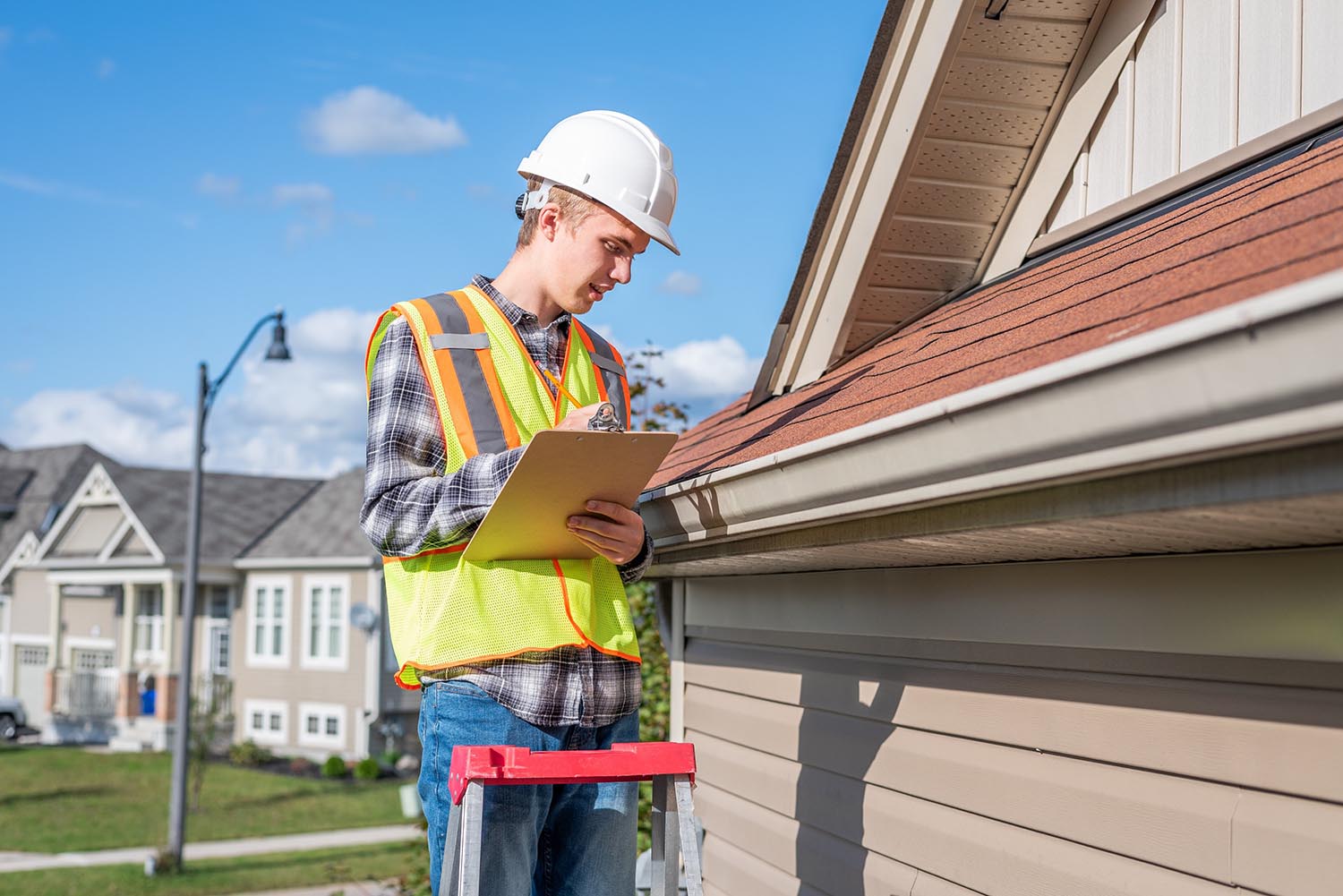

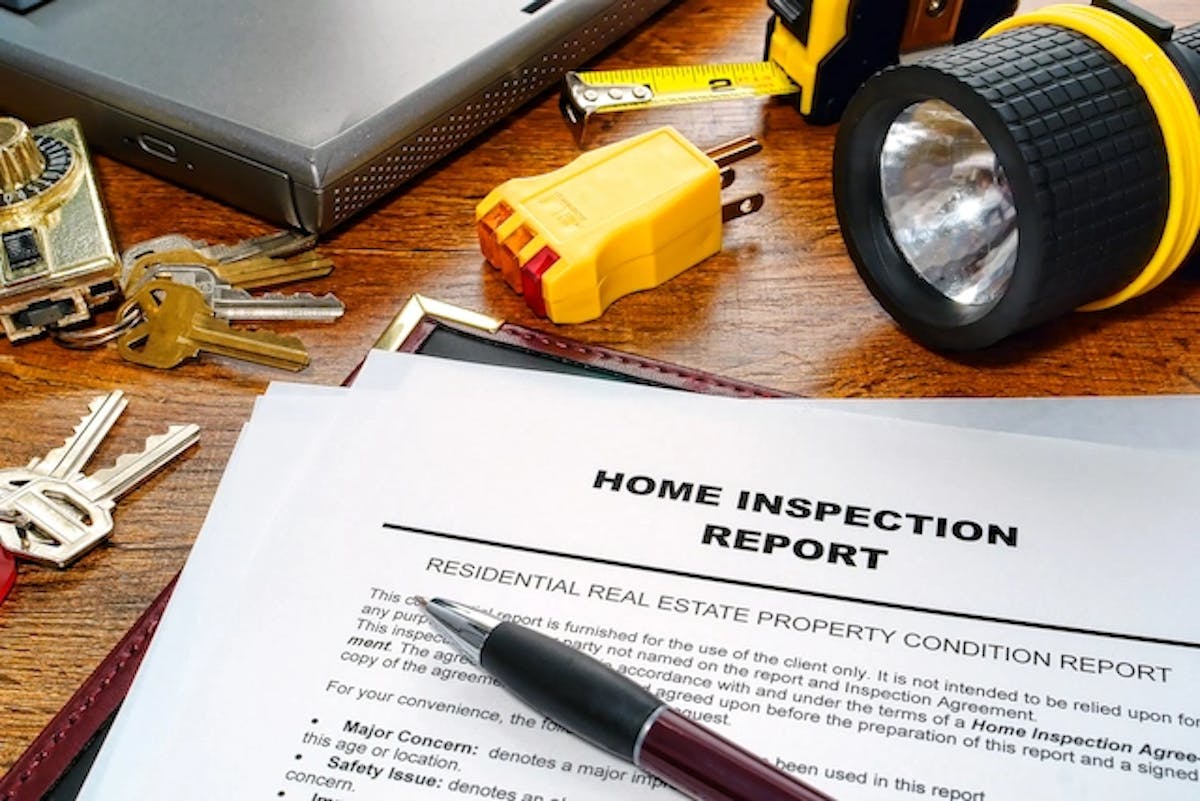
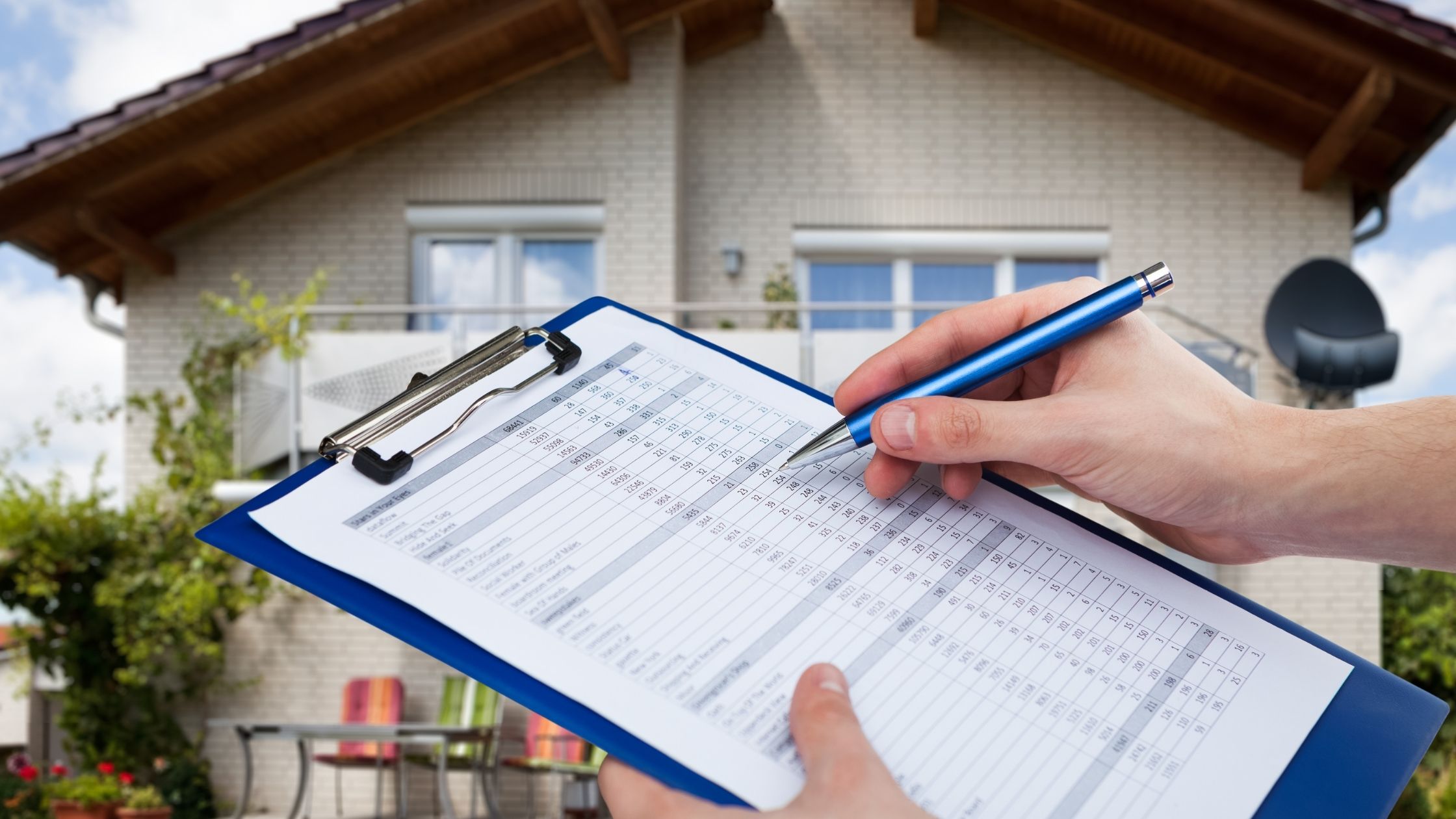


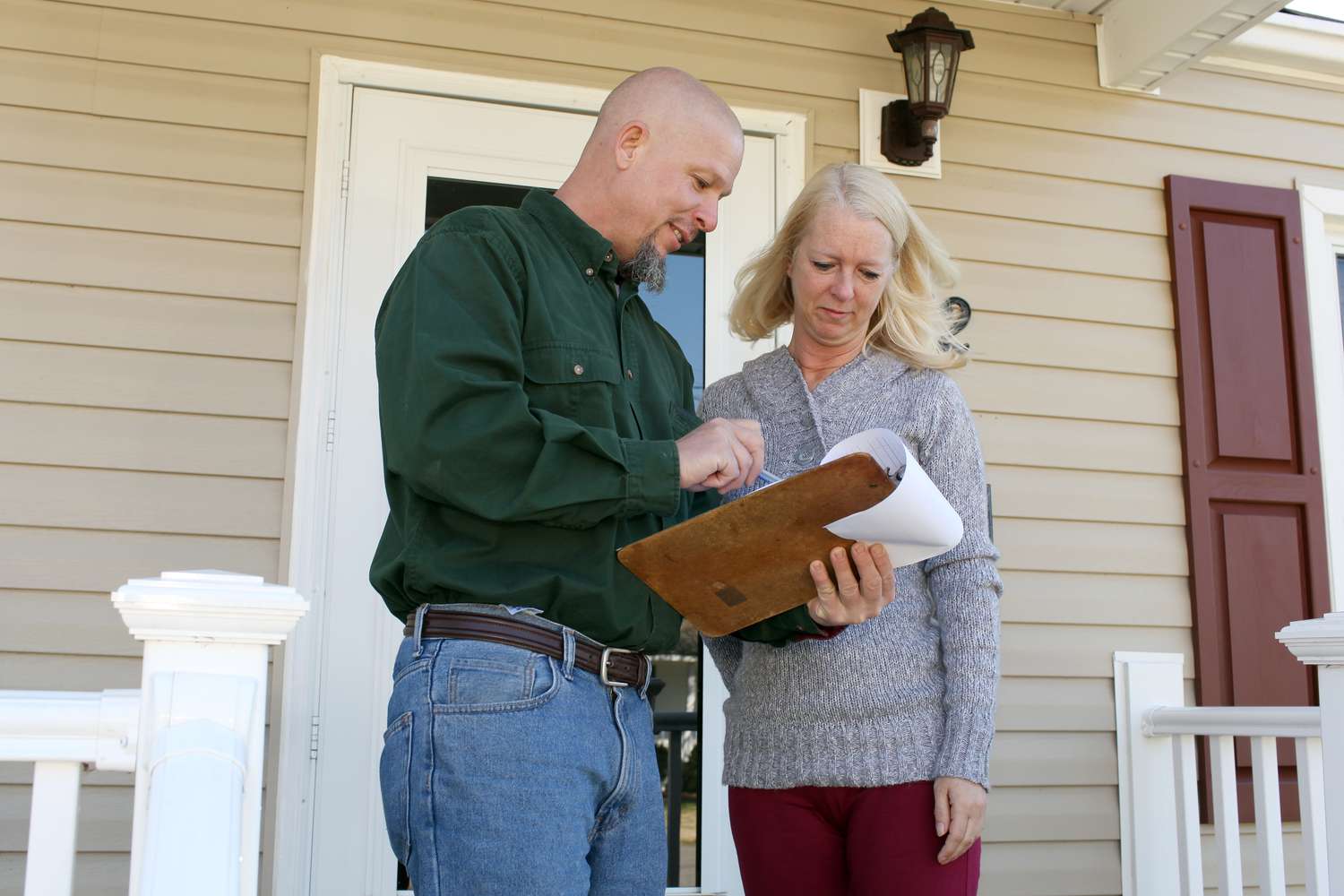

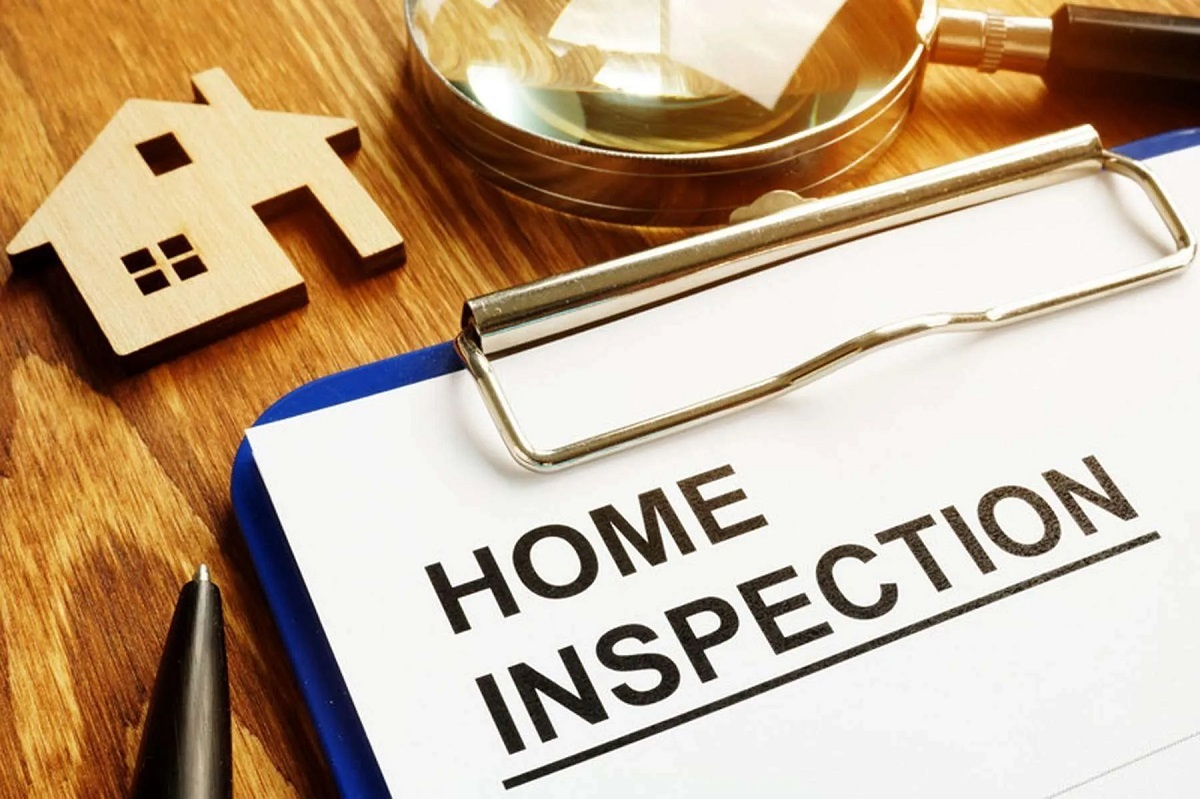




0 thoughts on “4-Point Inspection: How Long To Fix For Buyer And Seller”